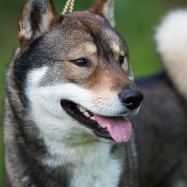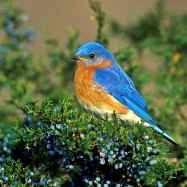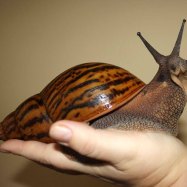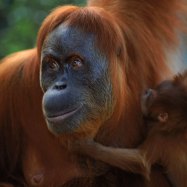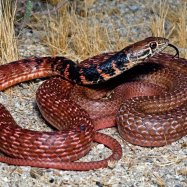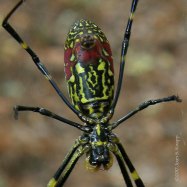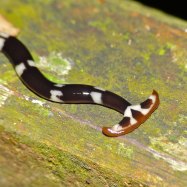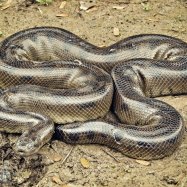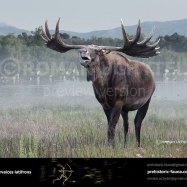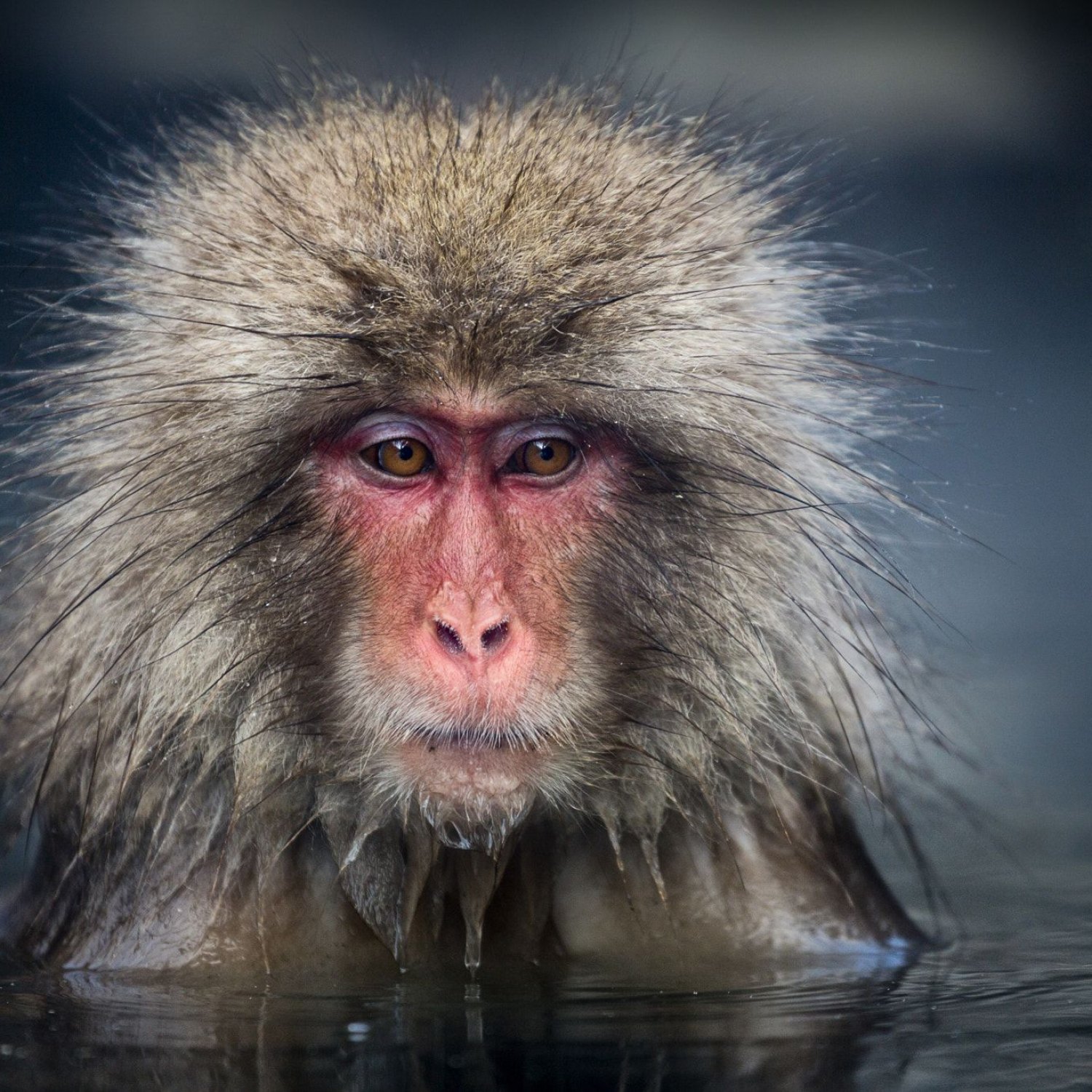
Japanese Macaque
About 50 to 60 centimeters
Discover the curious and intelligent Japanese Macaque, also known as the snow monkey. Standing at 50-60cm tall, these medium-sized primates are famous for their hot spring baths and thick winter coats. Found in the mountains of Japan, they belong to the Cercopithecidae family and have a stocky body shape. Get a glimpse of these playful creatures on your next trip to Japan.
Animal Details Summary:
Common Name: Japanese Macaque
Kingdom: Animalia
Habitat: Forests, mountains, and hot springs
The Fascinating World of the Japanese Macaque
Have you ever imagined being a monkey and living among the snow-covered mountains of Japan? Sounds like something out of a fairytale, doesn't it? Well, for the Japanese macaque, this is their reality. Also known as the snow monkey, the Japanese macaque is a fascinating primate species that inhabits the forests, mountains, and hot springs of Japan. This article will take you on a journey to explore the unique characteristics and behaviors of this amazing animal.Meet the Macaca Fuscata
The Japanese macaque, scientifically known as Macaca fuscata, is a member of the primate family Cercopithecidae Japanese Macaque. This family includes over 200 species of Old World monkeys, which are found across Africa, Asia, and Europe. The Japanese macaque is the only primate species found in Japan and is one of the most well-studied primates in the world.A Kingdom of Their Own
The Japanese macaque, like all other living organisms, belongs to the Kingdom Animalia. This kingdom encompasses all animals, from tiny insects to large mammals. This classification is based on the presence of certain defining characteristics, such as the ability to move and respond to their environment.A Member of the Chordata Phylum
Within the animal kingdom, the Japanese macaque belongs to the phylum Chordata. This is a diverse group of animals that all have one thing in common: a notochord at some point during their lifecycle. The notochord is a rod-like structure that supports the animal's body and helps it move.Part of the Mammalian Class
The Japanese macaque is classified under the class Mammalia, which includes animals that have fur or hair, produce milk, and are warm-blooded Japanese Chin. As mammals, Japanese macaques give birth to live young and provide them with nourishment and protection.Belonging to the Order Primates
Within the class Mammalia, the Japanese macaque falls within the order Primates. This order includes animals such as monkeys, apes, and humans. These animals share physical and behavioral characteristics, such as opposable thumbs, forward-facing eyes, and the ability to learn and problem-solve.A Social Cercopithecidae
The Japanese macaque belongs to the family Cercopithecidae, which is the largest family of Old World monkeys. These monkeys are known for their complex social structures and behaviors. Japanese macaques are highly social animals and live in large groups, or troops, that can consist of anywhere from 20 to 200 individuals.A Home Among the Mountains
The Japanese macaque has a unique habitat compared to other primate species. These monkeys are native to Japan and can be found in various areas of the country, from subtropical forests to snow-covered mountains. However, they are mainly found in the mountains, where they have adapted to survive in harsh, snowy conditions.Not Just Any Forest
Japanese macaques can be found in a variety of forest environments, from broad-leafed forests to coniferous forests. These forests provide the perfect shelter and food sources for the monkeys, allowing them to thrive in their natural habitat.Get Ready to Climb
One of the most fascinating things about the Japanese macaque is its ability to survive and thrive in snow-covered mountains. These monkeys are incredibly agile and can easily navigate through the trees and steep slopes of their mountain home. They also have specialized adaptations to help them survive in cold and snowy conditions.Unique Adaptations for Arctic Conditions
One of the most remarkable adaptations of Japanese macaques is their thick, gray fur. This fur not only helps them to blend in with their snowy surroundings, but it also provides insulation against the cold. These monkeys also have a layer of fat, called blubber, under their skin to provide additional insulation.Hot Springs Paradise
While Japanese macaques are known for their ability to live in snowy conditions, they also have a penchant for hot springs. In the Jigokudani Monkey Park in Japan, these monkeys have gained fame for their winter visits to the hot springs to keep warm.A Varied Diet
Japanese macaques have a wide-ranging diet, which is why they are considered omnivorous. They consume both plant matter, such as fruits, leaves, and bark, and also hunt and forage for insects, birds, and small mammals. Their varied diet is essential to their survival, especially during the cold winter months when food sources are scarce.Changing with the SeasonsDepending on the availability of food, Japanese macaques' diet can vary from season to season. During the summer, when fruits and insects are plentiful, they rely primarily on these food sources. However, during the winter, when foraging for insects and fruits is more challenging, they primarily consume plants and occasionally hunt for small animals.
Food for Thought
Japanese macaques' diet also varies depending on their age and social status within the troop. Younger monkeys tend to consume more insects, while females with young babies focus on vegetation for nursing and proper nutrition.A Unique Geographical Distribution
As mentioned earlier, the Japanese macaque is the only primate species native to Japan, making its geographical distribution quite unique. These monkeys are found throughout most of Japan, from the northern islands of Hokkaido to the subtropical islands in the south. They are also widespread in different mountain regions in central and western Japan.
Locating the Japanese Macaques
Despite their varied distribution, Japanese macaques are not always easy to spot. These monkeys are elusive and are mainly found in dense forests and mountain regions, where they can easily hide and avoid predators.
A Protected Species
While Japanese macaques are not considered endangered, they are protected and listed as a species of least concern. However, their population is facing threats from habitat destruction and human-wildlife conflict, as these monkeys are sometimes viewed as pests by local farmers.Getting to Know the Snow Monkeys
Now that we've covered the basics of the Japanese macaque let's delve deeper into their unique characteristics and behaviors, making them such a fascinating species.
The Snow Monkeys' Appearance
One of the most distinctive features of Japanese macaques is their gray, dense fur. This fur varies in color and can range from silver to brownish-gray, depending on the age and gender of the monkey. Additionally, these monkeys have a medium-sized, stocky body shape, with a tail that is around 8 to 12 centimeters in length.
Snow Monkeys' Social Structures
As mentioned earlier, Japanese macaques are highly social animals. They live in troops that are led by a dominant male, and the group is further divided into smaller subgroups led by dominant females. These monkeys form strong bonds and maintain complex social relationships within their troops, which allows them to succeed in the harsh mountain environment.
Intelligent Primates
Japanese macaques are known for their intelligence and problem-solving abilities. They are skilled at using tools, such as stones to break open nuts and branches to dig for insects. They have also been observed teaching these tool-use skills to their young.
Communication is Key
Japanese macaques have a wide range of vocalizations and body language that they use to communicate within their troops. They also use facial expressions, such as baring their teeth or showing their tongue, to express different emotions, such as aggression or submission.Conclusion: More Than Just a Snow Monkey
While Japanese macaques are often referred to as snow monkeys, they are more than just monkeys living in the snow. These fascinating primates have adapted to survive in harsh conditions, have complex social structures and behaviors, and are an integral part of Japan's cultural and ecological landscape. As we continue to learn more about these amazing animals, we can better appreciate and protect their unique way of life.

Japanese Macaque
Animal Details Japanese Macaque - Scientific Name: Macaca fuscata
- Category: Animals J
- Scientific Name: Macaca fuscata
- Common Name: Japanese Macaque
- Kingdom: Animalia
- Phylum: Chordata
- Class: Mammalia
- Order: Primates
- Family: Cercopithecidae
- Habitat: Forests, mountains, and hot springs
- Feeding Method: Omnivorous
- Geographical Distribution: Japan
- Country of Origin: Japan
- Location: Mainly found in the mountains of Japan
- Animal Coloration: Gray
- Body Shape: Medium-sized, stocky
- Length: About 50 to 60 centimeters
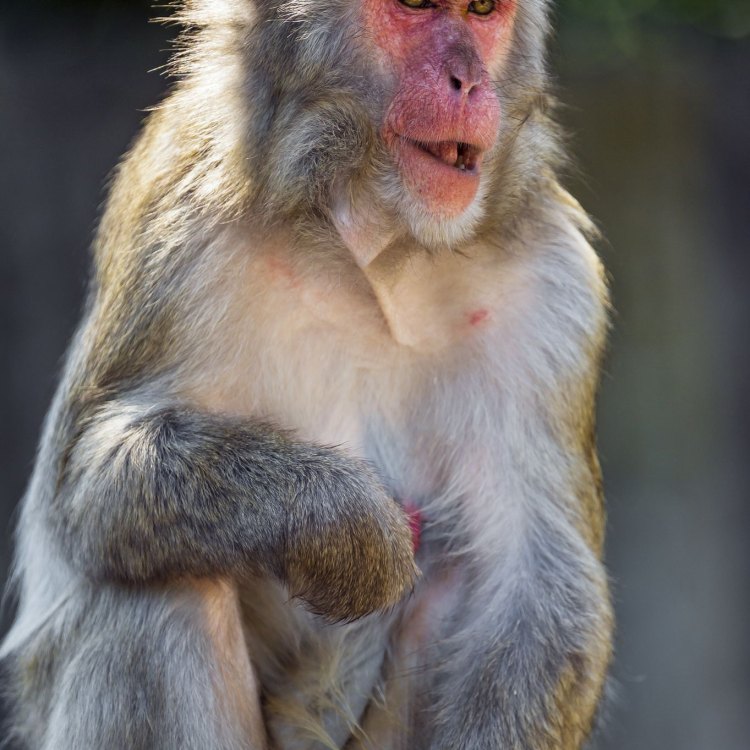
Japanese Macaque
- Adult Size: Up to 70 centimeters
- Average Lifespan: Around 25 years
- Reproduction: Sexual
- Reproductive Behavior: Year-round mating
- Sound or Call: Various vocalizations, including screeching and grunting
- Migration Pattern: Non-migratory
- Social Groups: Live in troops, led by a dominant female
- Behavior: Highly social and intelligent
- Threats: Habitat loss, hunting, and disease
- Conservation Status: Least Concern
- Impact on Ecosystem: Seed dispersers and ecosystem engineers
- Human Use: Traditionally hunted for food and used in medical research
- Distinctive Features: Red face, long face and tail, cheek pouches
- Interesting Facts: They are known for bathing in hot springs during winter
- Predator: Mainly humans
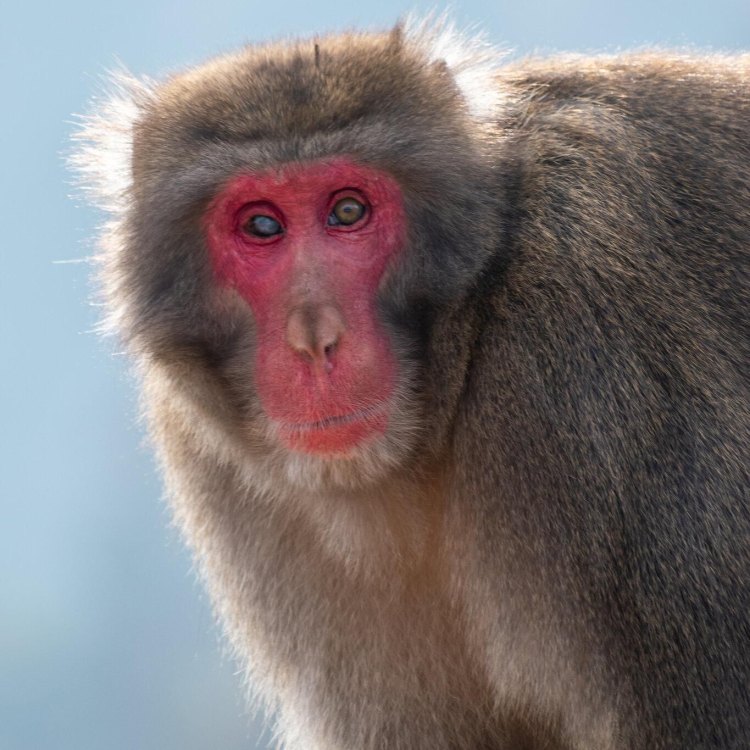
Macaca fuscata
The Fascinating World of the Japanese Macaque
When it comes to intelligent and social creatures, the Japanese macaque (Macaca fuscata) certainly takes center stage. Also known as the snow monkey, this species of Old World monkey can be found in various habitats throughout Japan. From snowy mountains to subtropical forests, the Japanese macaque has managed to thrive and adapt in different environments.In this article, we will dive into the unique features and behaviors of the Japanese macaque, as well as its impact on the ecosystem and interactions with humans PeaceOfAnimals.Com.
The Physicality of the Japanese Macaque
The Japanese macaque is a medium-sized primate, with an average adult size of up to 70 centimeters. They have a long face, a long and slender tail, and distinctive red faces that make them stand out from other macaque species. Their cheek pouches, used for storing food, are also a characteristic feature.One interesting fact about the Japanese macaque is that they are known for their adaptation to the cold climate. During winter, they grow a thick coat of fur to keep them warm, and they are the only non-human primate known to live in areas with heavy snowfall. In fact, they are known for their unique behavior of soaking in hot springs during the cold winter months, earning them the nickname "snow monkeys".
Reproduction and Social Behavior
The Japanese macaque follows a sexual reproductive system, with mating occurring throughout the year. Females reach sexual maturity at around 3-4 years old, while males reach it at 4-5 years old. Females give birth to a single offspring at a time, and the infant is dependent on its mother for the first few years of its life Jumping Spider.These monkeys are highly social creatures, living in groups called troops that can consist of up to 200 individuals. The troops are led by a dominant female, who determines the group's movements and activities. It is also common for female macaques to form close bonds with each other, and they are often seen grooming and caring for each other.
Communication and Migration
Like many other primates, the Japanese macaque has an extensive range of vocalizations and uses them to communicate with their troop members. From screeching and grunting to growling and cooing, these monkeys have a variety of sounds for different purposes, such as warning of predators or signaling distress.One unique aspect of the Japanese macaque is their non-migratory behavior. They are mainly sedentary and remain in their home range throughout the year. Within their home range, they have established paths and routes that they use to forage for food, ensuring a steady supply of resources for the group.
Threats and Conservation Status
The Japanese macaque faces various threats in their natural habitat, including habitat loss, hunting, and disease. Deforestation and human development have resulted in the loss of their natural home, while hunting for food and use in medical research have also significantly impacted their population.However, due to their adaptability and wide distribution, the Japanese macaque is currently listed as "Least Concern" on the IUCN Red List. There are also efforts in place to protect and conserve this species, such as the establishment of national parks and regulations on hunting and trade.
Impact on the Ecosystem
As seed dispersers and ecosystem engineers, the Japanese macaque plays a crucial role in maintaining the balance of their ecosystems. They consume a variety of fruits, insects, and even small animals, and in turn, help with seed dispersal and nutrient cycling. They have also been observed displaying tool-use behavior, such as using rocks to open hard-shelled nuts, further highlighting their intelligence and importance in the ecosystem.Interaction with Humans
The Japanese macaque has a long history of interaction with humans, both positive and negative. In the past, they were hunted for their meat and fur, and they are still used in traditional medicine and medical research. However, they are also a popular tourist attraction in Japan, and many national parks have designated areas where visitors can observe them in their natural habitat.Distinguishing Characteristics and Fun Facts
Aside from their red faces and long tails, the Japanese macaque has several other distinguishing features. They have hind limbs that are slightly longer than their front limbs, giving them a distinctive forward-leaning posture. They also have rough pads on their buttocks, which allows them to sit comfortably on cold surfaces such as rocks or snow.One fun fact about the Japanese macaque is that they are known to have a strict social hierarchy within their troops, with the dominant individuals having the most advantages. For example, they have priority access to food and grooming, and even get to sit in the hot springs first during winter.
The Human-Macaque Conflict
While the Japanese macaque is revered as a national symbol in Japan and is protected by law, there have been instances of conflict between humans and these monkeys. As their natural habitat continues to decrease, macaques have been forced to forage for food in urban areas, resulting in damage to crops and property. This has led to measures such as electric fences and deterrents to keep the monkeys away from human settlements.In Conclusion
The Japanese macaque is a fascinating and highly adaptable species, with many unique features and behaviors. From their ability to thrive in different environments to their social intelligence and impact on the ecosystem, these monkeys have certainly captured the interest of researchers and the public alike.While there are still threats to their population, there are also ongoing efforts to protect and conserve this species for future generations. As we continue to learn more about these intelligent and captivating creatures, it is crucial that we work towards finding a balance between their needs and human development to ensure their survival for years to come.

The Fascinating World of the Japanese Macaque
Disclaimer: The content provided is for informational purposes only. We cannot guarantee the accuracy of the information on this page 100%. All information provided here may change without prior notice.

